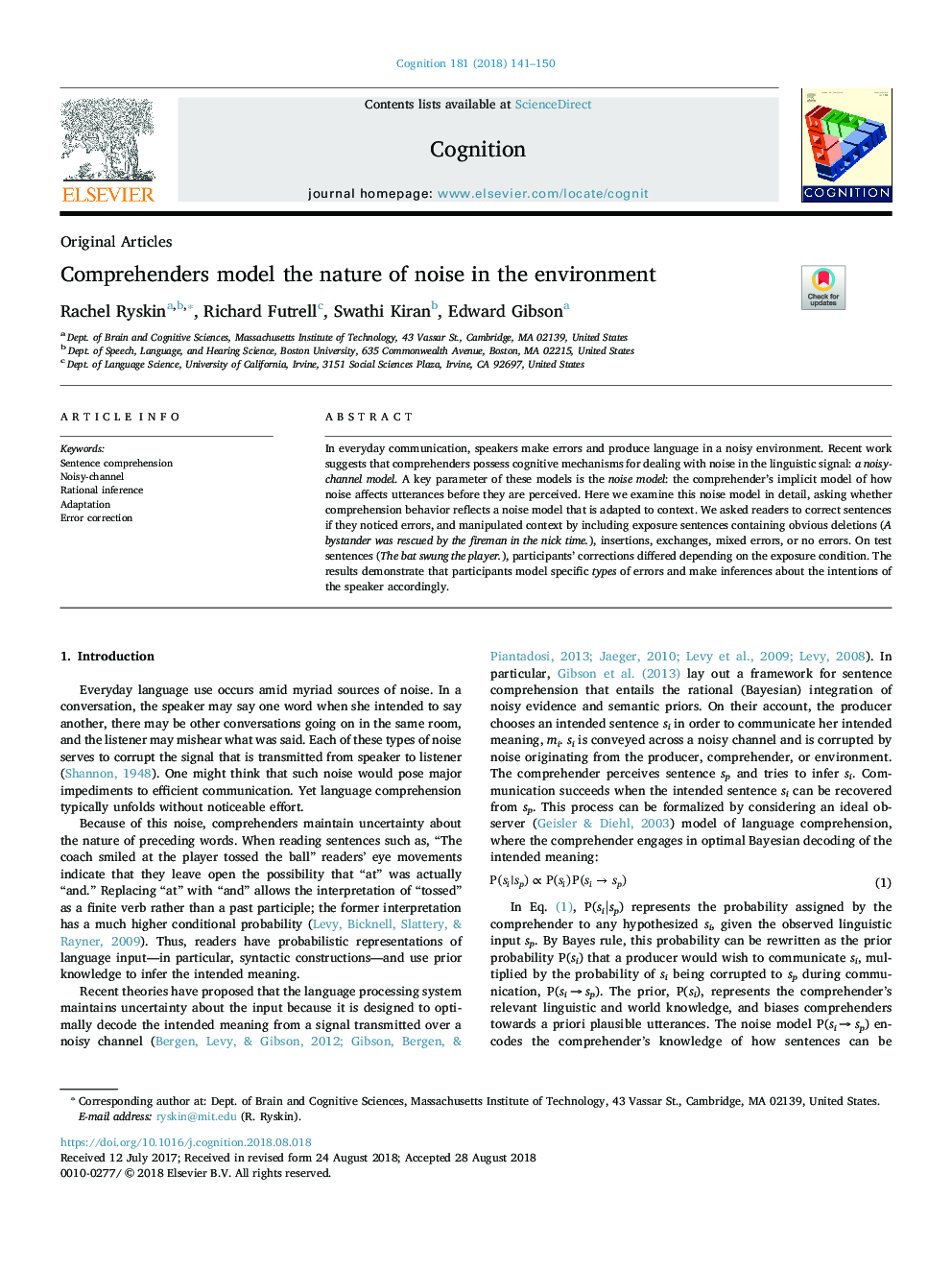| Article ID | Journal | Published Year | Pages | File Type |
|---|---|---|---|---|
| 9952987 | Cognition | 2018 | 10 Pages |
Abstract
In everyday communication, speakers make errors and produce language in a noisy environment. Recent work suggests that comprehenders possess cognitive mechanisms for dealing with noise in the linguistic signal: a noisy-channel model. A key parameter of these models is the noise model: the comprehender's implicit model of how noise affects utterances before they are perceived. Here we examine this noise model in detail, asking whether comprehension behavior reflects a noise model that is adapted to context. We asked readers to correct sentences if they noticed errors, and manipulated context by including exposure sentences containing obvious deletions (A bystander was rescued by the fireman in the nick time.), insertions, exchanges, mixed errors, or no errors. On test sentences (The bat swung the player.), participants' corrections differed depending on the exposure condition. The results demonstrate that participants model specific types of errors and make inferences about the intentions of the speaker accordingly.
Related Topics
Life Sciences
Neuroscience
Cognitive Neuroscience
Authors
Rachel Ryskin, Richard Futrell, Swathi Kiran, Edward Gibson,
